Football is an ever-evolving sport, constantly looking to improve and change. That is both a blessing and a curse, with the good news being that safety and comfort have been improved immeasurably but the downside being that some brilliant football stadiums have been lost to the annals of time. Some of these grounds are so beloved that a generation of fans still refer to the current stadium by the old name of the ground that went before.
Of course, the desire to think of history through rose-tinted glasses will always be present when people discuss football, with the matches of the 1970s and 1980s preferable to the modern era because ‘men were men and tackles were tackles’. Even so, the stadiums on this list are all ones that will live long in the memories of those that got to play there, such was the extent to which they burned themselves into the conscience of football fans.
Filbert Street
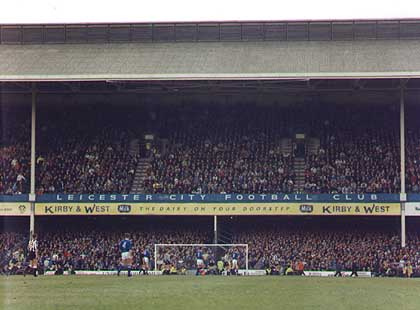
The capacity when it closed in 2002 was only 22,000, but it welcomed more than 47,000 fans in in its heyday.
When it first opened, Filbert Street was made up of mere earth banks, with a small stand in its west side. This remained the case until 1921 when a bigger main stand was opened, then a larger stand at the south end that became known as the Spion Kop was built six years later. In the wake of the Hillsborough Disaster, Filbert Street had to become all-seater and the limited capacity meant that talks of a move became common.
In the end, Leicester City couldn’t expand Filbert Street any more than they had so the club moved to what is now known as the King Power. Demolition work on Filbert Street began in March of 2003, with part of it becoming ‘Filbert Village’, accommodation for students from the nearby De Montfort University and the University of Leicester. As someone said at the time, it was a ‘sad day’ when it was demolished, but ‘time to move on’.
Wembley
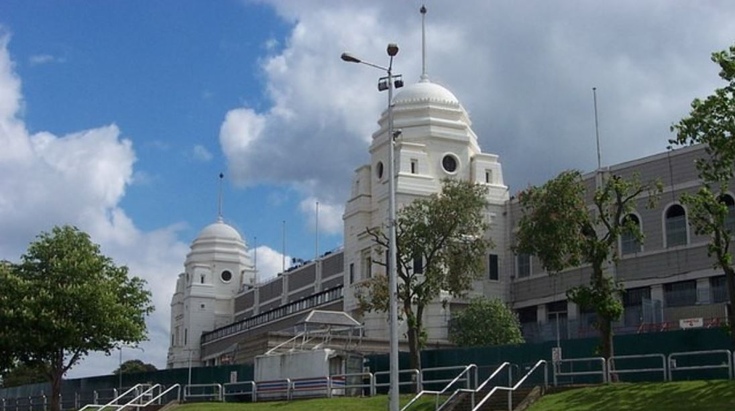
The new Wembley Stadium is an impressive sight, but it is a soulless, corporate affair when compared to the Wembley of old. The turf on that ground was first cut by King George V before being opened to the public in April of 1923. Originally known as the British Empire Exhibition Stadium before becoming referred to simply as the Empire Stadium, it was built by Sir Robert McAlpine for a cost that would today amount to around £46 million.
The initial plan was for the stadium to be demolished at the end of the exhibition but instead a Scot named Sir James Stevenson suggested keeping it. It was viewed as something of an expensive white elephant in the wake of the exhibition and the owner began selling off parts of it. It was eventually rescued by the Wembley Stadium and Greyhound Racecourse Company, turning it into a sports venue.
In the decades that followed, Wembley became the home of England’s football team as well as the venue for the FA Cup final. The Twin Towers soon became emblematic of the ground as well as its nickname, whilst the 39 steps that players needed to climb at the end of the match to receive the trophy and a well done from the Royal Box also became famous. It was the right time to move out of it in 2000, but it was the site of some truly memorable games before that.
Highbury
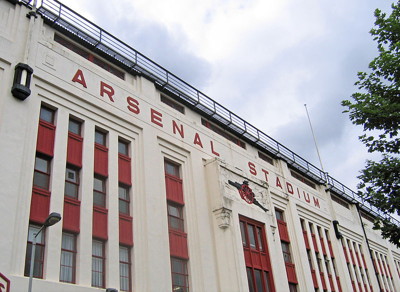
If you want a stadium that is inextricably linked to the club that used to play its games there, then you’d struggle to find a better example than Highbury. Officially named Arsenal Stadium, it became known as Highbury because of the area of London in which it was located. The Gunners moved there from South London in 1913, having previously been based in Plumstead, triggering a fierce rivalry with the original North London club, Tottenham Hotspur.
Arsenal originally spend £20,000 leasing the recreation fields of St John’s College of Divinity, with part of the lease terms stating that football could not be played there on ‘holy days’ and that ‘intoxicating liquor’ would be sold there. These stipulations were, unsurprisingly, dropped within a year and the physical stadium was built on the site during the summer of 1913 from designs by Archibald Leitch.
As with so many clubs, the decree from the Taylor Report in the Hillsborough Disaster meant that Arsenal had to turn their ground into an all-seater venue, resulting in the capacity dropping significantly. Arsenal’s success under Arsene Wenger in the 1990s and early 2000s meant that supporters were desperate to attend matches, so ultimately the decision was taken to move to a new stadium rather than redevelop the Grade II listed site.
White Hart Lane
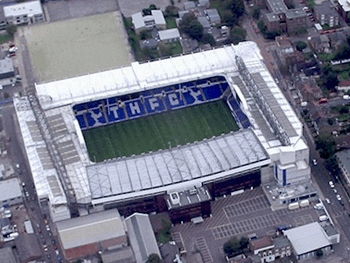
Arsenal aren’t the only club in the north of London to move to a new home and therefore lose the beauty of their old ground. Tottenham Hotspur, fierce rivals of the Gunners, also outgrew their former stadium and decided to build another one on the site of it, which opened in 2019. Whilst there’s no questioning the impressive nature of the new ground and the fact that it’s better for spectators, it’s also true that something has been lost.
White Hart Lane opened in 1899 and immediately became the home of Tottenham Hotspur, quickly becoming known as ‘The Lane’ to fans of the club. It would go on to host 2,533 games over the 118 years of its existence, including some famous nights in Spurs’ history. It underwent a redevelopment at the start of the 20th century, with famed developer Archibald Leitch designing the stands that would become so beloved.
The bronze fighting cock that overlooked the pitch became an emblem for the club, known as Harry Hotspur. Numerous changes and improvements to the ground took place over the years, but ultimately it was felt that the club had outgrown it and it was impossible to keep finding the space needed at White Hart Lane. The last match played there was a 2-1 win for Spurs over Manchester United. The new ground might be an improvement, but it lacks the spirit of the Lane.
The Boleyn Ground (Upton Park)
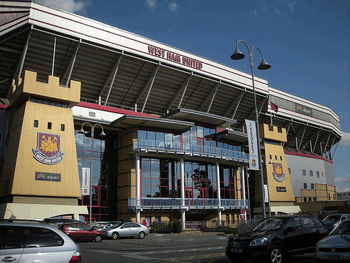
Completing a hat-trick of London top-flight clubs that have seen their grounds demolished over the years is West Ham United. The side’s original home in the eyes of many was opened in 1904 and was popularly referred to as Upton Park, meaning that when it was being closed and constantly called the Boleyn Ground many people didn’t even realise that that was the stadium’s official name.
The Hammers moved to the London Stadium for the start of the 2016-2017 season, but practically nobody in football has seen that move as a successful one. Upton Park was known as being a difficult ground to visit, with the various stands being close to the pitch and therefore allowing the home supporters to offer an intimidating atmosphere. Many clubs wilted at Upton Park, giving it the reputation of a fierce place to play.
The decision to move away from the Boleyn Ground ultimately came down to capacity, given that the Taylor Report’s requirement for all grounds to become all-seater venues meant that the capacity of the stadium was just too limited. Initially plans to expand the East Stand would have seen more than 40,000 people able to attend matches, but in there end the offer to move to the London Stadium in the wake of the Olympics made too much financial sense for the Hammers.
Belle Vue
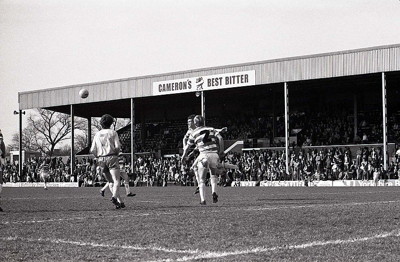
Belle Vue in Doncaster opened its doors for the first time in 1922, immediately becoming the home ground of Doncaster Rovers. It was known as being the stadium that had the biggest pitch in the United Kingdom, measuring 110 yards in length and 72 yards in width. It was also known as being a ground with a lovely pitch to play on, with the fertile soil of the area offering a playing surface that players adored.
When it first opened, just 7,000 spectators could watch matches there but the capacity increased every year as the club’s finances allowed. One of the most thrilling things to happen occurred in 1927 when the club’s old Main Stand at Bennetthorpe was jacked up, put on rollers and physically moved to Belle Vue to become the Family Stand. It’s that sort of thing that gave Belle Vue its personality and made it such a loved ground.
The football club’s failing fortunes meant that the capacity of Belle Vue had to be cut dramatically, with as few as 4,859 people allowed in in 1987 after subsidence was found. A fire in the Main Stand in 1995 caused huge damage, with the club’s Chairmen eventually arrested for conspiracy to commit arson and sentenced to four years in prison. Though renovations were carried out in 2003, the ground was eventually demolished in 2007.
Burnden Park
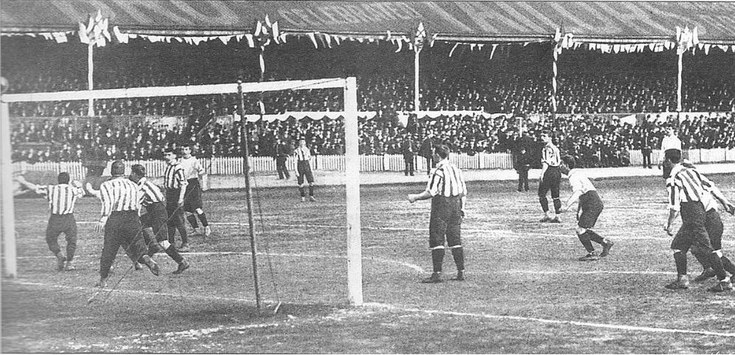
Bolton Wanderers first started playing football at Burnden Park in 1895, having been formed over two decades before. The club, which was one of the founder members of the Football League, had become a Limited Company a year before specifically to allow it to raise shares to build a purpose-built football stadium. The first league match there was against Everton, with more than 15,000 people turning up to watch it.
The ground was a respected one, hosting the FA Cup Final replay between Tottenham Hotspur and Sheffield United in 1901. Up to 70,000 people could attend matches at Burnden Park in its heyday, but the club’s decline in the 1980s meant that attendances were falling and a section of the area was sold in 1986 to make way for a superstore. When the Taylor Report required the conversation to an all-seater stadium, the club’s director’s decided it would be easier to simply move to a new ground.
Burnden Park is perhaps best known as being the location of what was, at the time, the worst stadium disaster in British football history. 33 Bolton fans died and 400 others were injured during a match between the home side and Stoke City in the FA Cup quarter-finals in 1946. More than 85,000 were in attendance, which was about 15,000 over capacity, leading to the Moelwyn Hughes official report that recommended a cap on crowd sizes.
The Dell
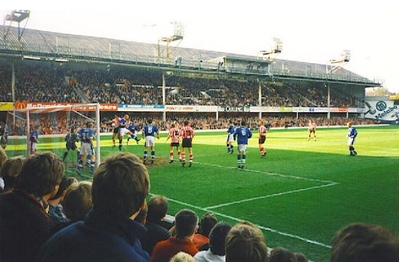
Just as football fans of a certain age will never get used to Leicester City playing anywhere other than Filbert Street, so too will the same people struggle to remember that Southampton no longer play their home matches at The Dell. The Saints began playing their games at the ground in 1898, having previously shared occupancy of the County Ground with Hampshire County Cricket Club until the rent became too expensive.
A Limited Company was formed in 1896 to raise funds to pay for the building of the new ground, with fish merchant George Thomas appointed as the Director. When the ground was eventually built it did not have an official name, being called variously ‘the Fitzhugh Dell’, the ‘Archer’s Ground’ and ‘Milton Park’ before eventually becoming known simply as The Dell. It was redeveloped several times during its existence, most notably in 1927 under the watchful eye of Archibald Leitch.
A year after its redevelopment, a cigarette was dropped into the East Stand which resulted in its destruction. That was as nothing compared to the damage done to it by German bombs during the Second World War. In the wake of the war’s conclusion, The Dell became the first stadium in England to have floodlights fitted. Huge crowds packed into The Dell for many years until capacity was limited by the Taylor Report, leading to Saints leaving the ground for pastures new.
The Den
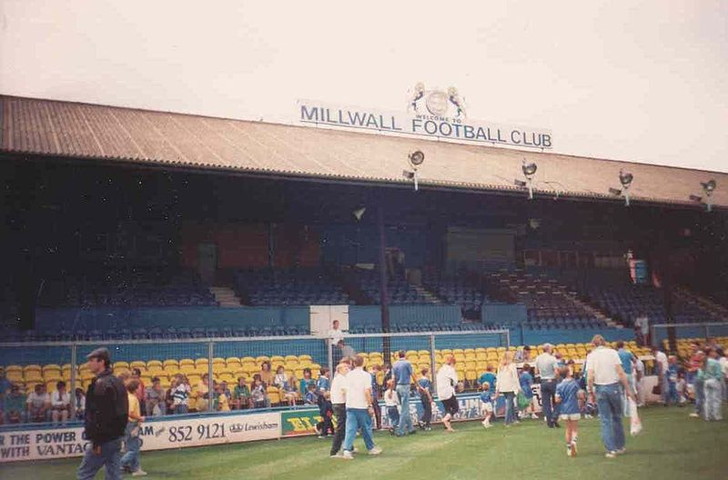
Millwall currently play at a ground called The Den, which isn’t to be confused with The Den that Millwall played their games in before the current stadium was built. The old one was an intimidating place for football grounds to visit, if for no other reason than the passionate nature of the home support. It was the fifth stadium that Millwall played their games in, but once they moved to it in 1910 they remained there until leaving it in 1993.
The stadium didn’t witness a Football League match for another ten years, with Bristol Rovers losing 2-0 to the home side in 1920 in the Football League Division 3 South, which the Lions had been founding members of. They club wanted to build a new two-tier stand in the wake of the Second World War but were denied permission to because of rationing, evening though they’d secured the necessary materials.
As the 20th century progressed, Millwall earned the reputation of being a club with a growing hooligan element, leading to the Chief Executive, Tony Shaw, suggesting they might need to move home and even change name to remove it. The ‘Millwall Roar’ from the home crowd led to many viewing the stadium as a feared place to travel to. The fans were uncompromising in their support of their club, with The Den being a hostile ground to play in.
Leeds Road
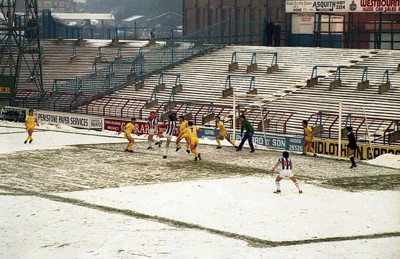
Despite its name, Leeds Road was actually located in Huddersfield and was the home ground of Huddersfield Town from 1908 until 1994. Though Huddersfield Town are far from being considered to be a well supported club nowadays, a record attendance of 67,037 was notched up at Leeds Road in the sixth round of the FA Cup back in 1932. When Valley Parade suffered a fire in 1985, Leeds Road hosted Bradford City’s games for a time.
A similar story could be told of Manchester United, who used Leeds Road as their home stadium when Old Trafford was being rebuilt in 1948. It also played host to a match between England and the Netherlands in 1946, which the home nation won 8-2. As with so many other grounds on this list, the Taylor Report’s decision to say that the top two division’s stadiums had to become all-seater was the beginning of the end for Leeds Road, with Huddersfield Town in the Third Division but aiming for promotion.
Rather than look to redevelop Leeds Road, Huddersfield Town’s board decided to build a new all-seater stadium in a different location. Their final match at the ground was also their 1,554th, defeating Blackpool 2-1 in front of a near-capacity crowd. It was demolished not longer after the match, with a B&Q store being built in its place. In the car park, there is a plaque that denotes the position of the centre circle in this now forgotten stadium.
